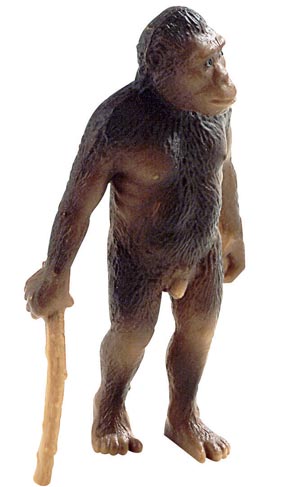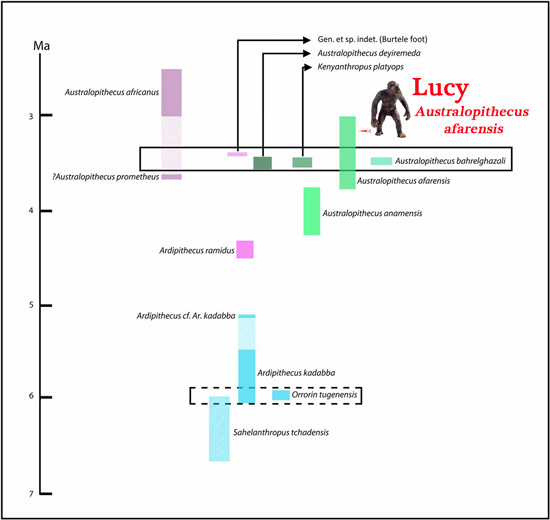New Study Suggests Lots of Early Hominins
A new study published this week in the academic journal “The Proceedings of the National Academy of Sciences (United States)”, concludes that the early hominins of Africa were much more speciose than previously thought. The most famous early human fossil, “Lucy” so named as the field team were listening to “Lucy in the Sky with Diamonds” by the Beatles when her fragmentary fossils first came to light, a member of the species Australopithecus afarensis, had plenty of other types of early hominin for company.
Early Hominins
A Model of an Australopithecus afarensis
A Complicated Family Tree
The analysis of the current known early hominin fossil material was conducted by Dr Yohannes Haile-Selassie and Dr Denise Su (The Cleveland Museum of Natural History), in conjunction with their colleague from the Max Planck Institute for Evolutionary Anthropology in Leipzig, Dr Stephanie Melillo. In a review of the fossil evidence from Chad, Ethiopia and Kenya, the scientists suggest that around 3.6 million years ago, a number of ancient hominin species co-existed. It seems that “Lucy” and her kind had plenty of company. The hominin family tree is complicated.
More models and replicas of early hominins: Safari Ltd. Wild Safari Prehistoric World Models.
Hominin Diversity in the Late Miocene and Pliocene Epochs
Picture credit: PNAS with additional annotation by Everything Dinosaur
The scientists conclude that more fossil material needs to be found. More fossils will help establish the evolutionary relationships of these species. The researchers would like to know how these early hominins competed for resources.
Visit Everything Dinosaur’s website: Everything Dinosaur.



